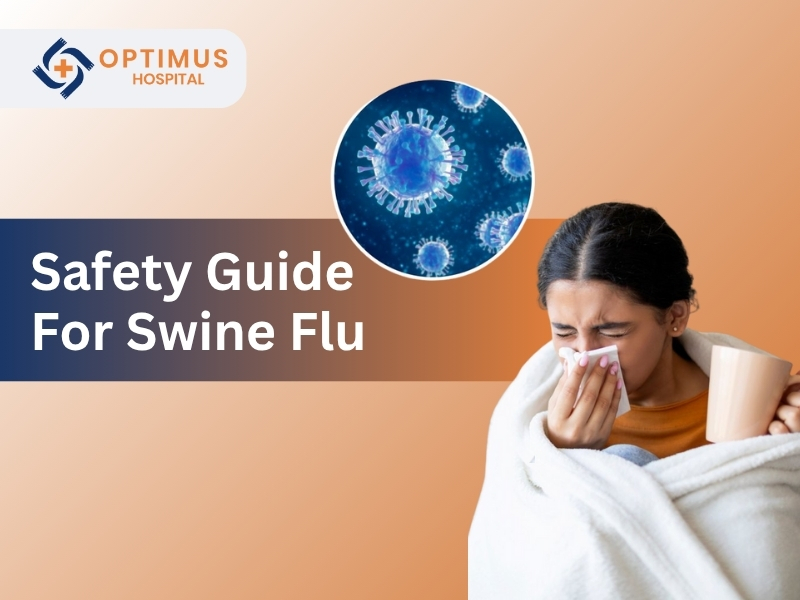Swine flu, also known as H1N1 influenza, is a contagious respiratory illness that spreads quickly, especially during flu season. With every passing year, health authorities urge people to stay alert and take necessary precautions. That’s why we’ve prepared this Swine Flu Safety Guide to help you and your family stay protected, informed, and calm throughout the season.
Whether you’re a parent, student, office-goer, or senior citizen understanding what swine flu is, how it spreads, and what steps to take can save lives.
What is Swine Flu?
Swine flu is a type of influenza virus that originally infected pigs but can now be transmitted to and between humans. The H1N1 strain was first identified in 2009 and caused a global pandemic. Today, it’s a seasonal flu virus that continues to circulate.
While most cases are mild, swine flu can become severe in certain groups such as young children, the elderly, pregnant women, and people with weakened immune systems.
How Does Swine Flu Spread?
Understanding the transmission is a key part of this Swine Flu Safety Guide. The virus mainly spreads from person to person through:
-
Coughs and sneezes
-
Touching contaminated surfaces
-
Close contact with an infected person
The virus can live on hard surfaces (like doorknobs or phones) for up to 48 hours, making hygiene absolutely crucial.
Symptoms of Swine Flu to Watch For
Symptoms typically appear 1 to 4 days after exposure and may include:
-
High fever (101°F or above)
-
Cough and sore throat
-
Runny or stuffy nose
-
Muscle aches and fatigue
-
Headache
-
Nausea, vomiting, or diarrhea (more common in children)
If these symptoms appear, consult a doctor immediately, especially if the patient is at high risk.
Who is at Higher Risk?
While anyone can catch the flu, these groups need extra protection:
-
Children under 5 years old
-
Adults over 65 years
-
Pregnant women
-
People with asthma, diabetes, heart disease, or weakened immunity
-
Healthcare workers
This Swine Flu Safety Guide emphasizes timely vaccination and medical consultation for these groups.
Prevention Tips – Your Shield Against Swine Flu
This Swine Flu Safety Guide isn’t just about information—it’s about actionable steps. Here’s what you can do to stay protected:
1. Get Vaccinated
The annual flu vaccine includes protection against H1N1. It’s safe, effective, and recommended for everyone above 6 months of age.
2. Wash Your Hands Regularly
Use soap and water or alcohol-based hand sanitizers. Clean your hands:
-
Before eating
-
After coughing/sneezing
-
After touching public surfaces
3. Wear a Mask in Crowded Areas
Especially during outbreaks or in clinics, wearing a mask can reduce transmission significantly.
4. Avoid Touching Your Face
Viruses often enter through eyes, nose, or mouth. Keep your hands away from your face as much as possible.
5. Disinfect Frequently Touched Surfaces
Phones, door handles, and kitchen counters can harbor the virus. Disinfect them daily.
6. Maintain Social Distance
Avoid close contact with sick people. If you’re unwell, stay home and rest.
What to Do If You Suspect Swine Flu?
If symptoms appear, especially in high-risk individuals:
-
Visit a doctor immediately
-
Get tested to confirm H1N1
-
Start antiviral medication (like oseltamivir) as prescribed
-
Isolate at home for 5–7 days
-
Drink plenty of fluids and monitor oxygen levels (if possible)
Don’t self-medicate. Prompt action saves lives.
Swine Flu Treatment Options
Swine flu is caused by a virus, so antibiotics don’t help. Here’s what treatment includes:
-
Antiviral drugs (Tamiflu or Relenza)
-
Fever reducers like paracetamol
-
Cough syrups for relief
-
Rest and hydration
In severe cases, hospitalization may be required, especially if breathing becomes difficult.

